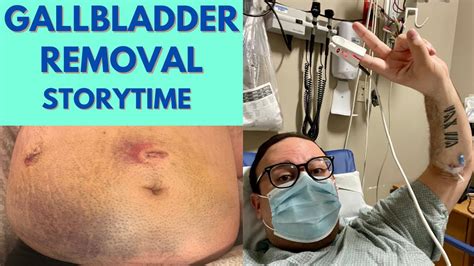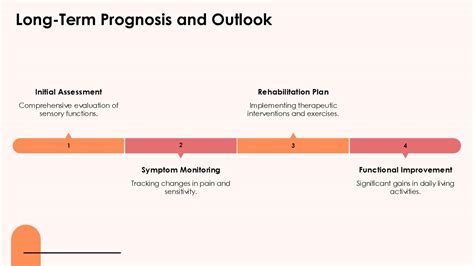Intro
Learn about gallstone removal recovery with our comprehensive guide, covering post-operative care, diet, and lifestyle changes to ensure a smooth recovery from gallbladder surgery, minimizing complications and promoting overall health and wellness.
The presence of gallstones can be a painful and debilitating experience for many individuals. Gallstones are small, hard deposits that form in the gallbladder, a small organ located under the liver that stores bile, a digestive fluid. When these stones block the flow of bile, they can cause severe abdominal pain, nausea, and vomiting. In many cases, surgical removal of the gallbladder, also known as a cholecystectomy, is the most effective treatment option. However, the recovery process after gallstone removal surgery can be a challenging and intimidating experience for many patients.
Understanding the recovery process and what to expect after gallstone removal surgery is crucial for a smooth and successful recovery. This is because the recovery period can vary depending on the individual's overall health, the type of surgery performed, and the presence of any underlying medical conditions. Generally, patients who undergo laparoscopic surgery, a minimally invasive procedure, tend to recover faster than those who undergo open surgery. Nevertheless, it is essential to follow the doctor's instructions and take necessary precautions to avoid complications and ensure a speedy recovery.
Gallstone removal surgery is a common procedure, and with advancements in medical technology, the risks associated with the surgery have significantly decreased. However, it is still a major surgery, and patients need to be aware of the potential risks and complications that can arise during the recovery period. Some common complications include infection, bleeding, and injury to surrounding organs. Additionally, patients may experience symptoms such as diarrhea, bloating, and gas after the surgery, which can be managed with dietary changes and medication. By understanding the potential risks and taking necessary precautions, patients can minimize the risk of complications and ensure a smooth recovery.
Gallstone Removal Surgery Overview

Types of Gallstone Removal Surgery
The type of surgery performed depends on the individual's specific condition and the surgeon's preference. Some common types of gallstone removal surgery include: * Laparoscopic cholecystectomy: This is the most common method of gallstone removal surgery. It involves making small incisions in the abdomen and using a laparoscope to visualize the gallbladder and surrounding organs. * Open cholecystectomy: This method involves making a larger incision in the abdomen to access the gallbladder. It is typically used for more complex cases or when the patient has a history of previous abdominal surgery. * Robotic cholecystectomy: This is a minimally invasive procedure that uses a robotic system to assist the surgeon during the procedure. It offers improved visualization and precision compared to traditional laparoscopic surgery.Preparation for Gallstone Removal Surgery

What to Expect During the Surgery
During the surgery, the patient is typically given general anesthesia to ensure they remain comfortable and pain-free. The surgeon then makes the necessary incisions and uses specialized instruments to remove the gallbladder and any stones. The entire procedure usually takes about 1-2 hours to complete, depending on the complexity of the case.Recovery After Gallstone Removal Surgery

Managing Pain and Discomfort
Managing pain and discomfort is a crucial aspect of the recovery process. Patients can expect to experience some pain and discomfort, which can be managed with medication. The surgeon may prescribe pain medication, such as acetaminophen or ibuprofen, to help manage pain and discomfort. Additionally, patients can use other methods, such as applying heat or cold packs, to help alleviate pain and discomfort.Diet and Nutrition After Gallstone Removal Surgery

Returning to Normal Activities
Returning to normal activities after gallstone removal surgery can take some time. Patients are usually advised to: * Avoid heavy lifting and bending for several weeks after the surgery to prevent straining and discomfort * Avoid strenuous activities, such as exercise and sports, for several weeks after the surgery to prevent complications and promote healing * Gradually return to normal activities, such as work and daily chores, as their body allowsPotential Complications and Risks

Minimizing the Risk of Complications
Minimizing the risk of complications is crucial for a smooth and successful recovery. Patients can minimize the risk of complications by: * Following the surgeon's instructions and recommendations * Attending follow-up appointments to monitor their progress and identify any potential issues * Reporting any symptoms or concerns to their surgeon promptlyLong-Term Outlook and Prognosis

Maintaining a Healthy Lifestyle
Maintaining a healthy lifestyle is crucial for promoting long-term health and preventing future complications. Patients can maintain a healthy lifestyle by: * Eating a balanced diet that is low in fat and high in fiber * Exercising regularly to promote digestion and prevent constipation * Managing stress and anxiety through relaxation techniques, such as meditation and deep breathingWhat are the symptoms of gallstones?
+Gallstones can cause a range of symptoms, including severe abdominal pain, nausea, vomiting, and fever. In some cases, patients may experience no symptoms at all.
How long does it take to recover from gallstone removal surgery?
+The recovery time after gallstone removal surgery can vary depending on the individual's overall health and the type of surgery performed. Generally, patients can expect to make a full recovery within several weeks.
What are the potential complications and risks associated with gallstone removal surgery?
+Potential complications and risks associated with gallstone removal surgery include infection, bleeding, and injury to surrounding organs. Patients can minimize the risk of complications by following the surgeon's instructions and recommendations.
How can I manage pain and discomfort after gallstone removal surgery?
+Pain and discomfort after gallstone removal surgery can be managed with medication, such as acetaminophen or ibuprofen. Patients can also use other methods, such as applying heat or cold packs, to help alleviate pain and discomfort.
What dietary changes should I make after gallstone removal surgery?
+Patient should follow a special diet, such as a low-fat diet, to help manage symptoms and prevent complications. They should also incorporate high-fiber foods, such as fruits and vegetables, to help promote digestion and prevent constipation.
In conclusion, gallstone removal surgery is a common and effective treatment option for patients suffering from gallstones. By understanding the recovery process and what to expect after surgery, patients can minimize the risk of complications and ensure a smooth and successful recovery. If you have any questions or concerns about gallstone removal surgery, we encourage you to reach out to your healthcare provider or leave a comment below. Share this article with anyone who may be experiencing symptoms of gallstones, and let's work together to promote awareness and education about this common health issue.
